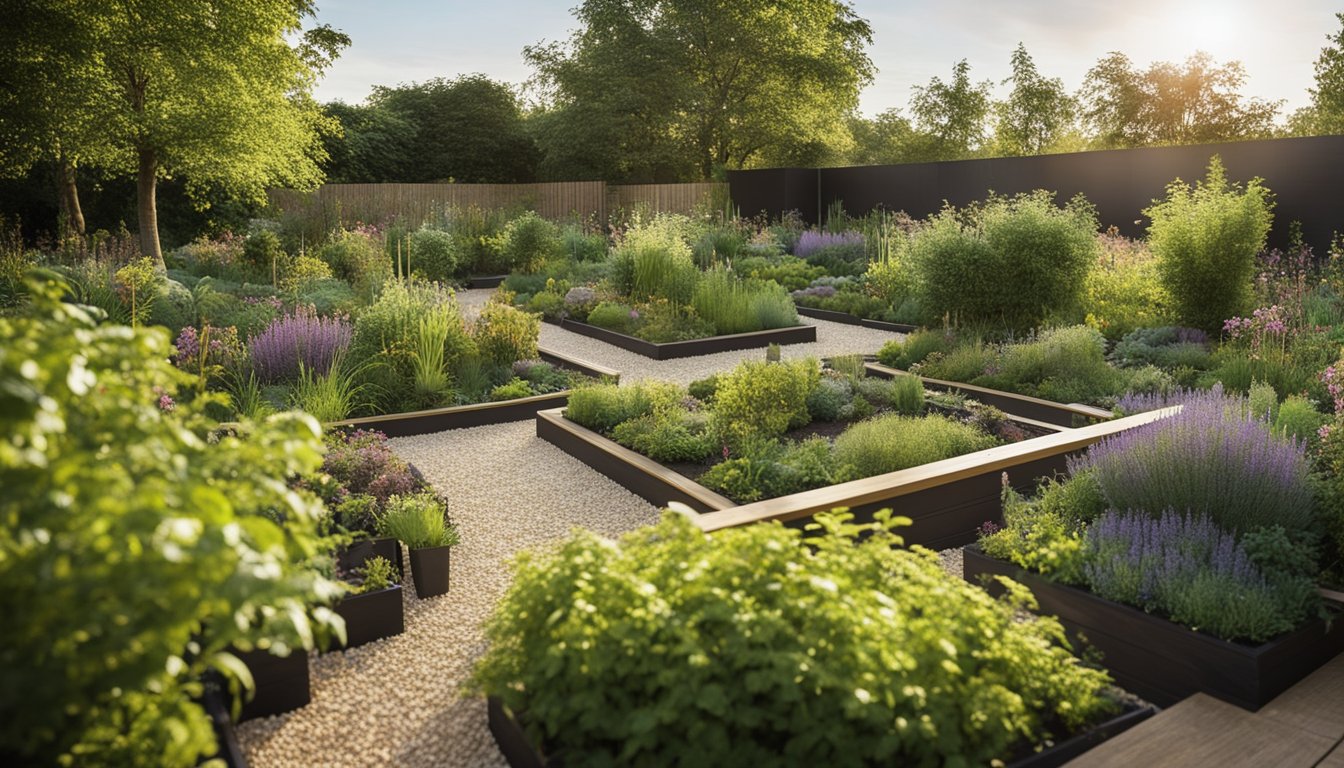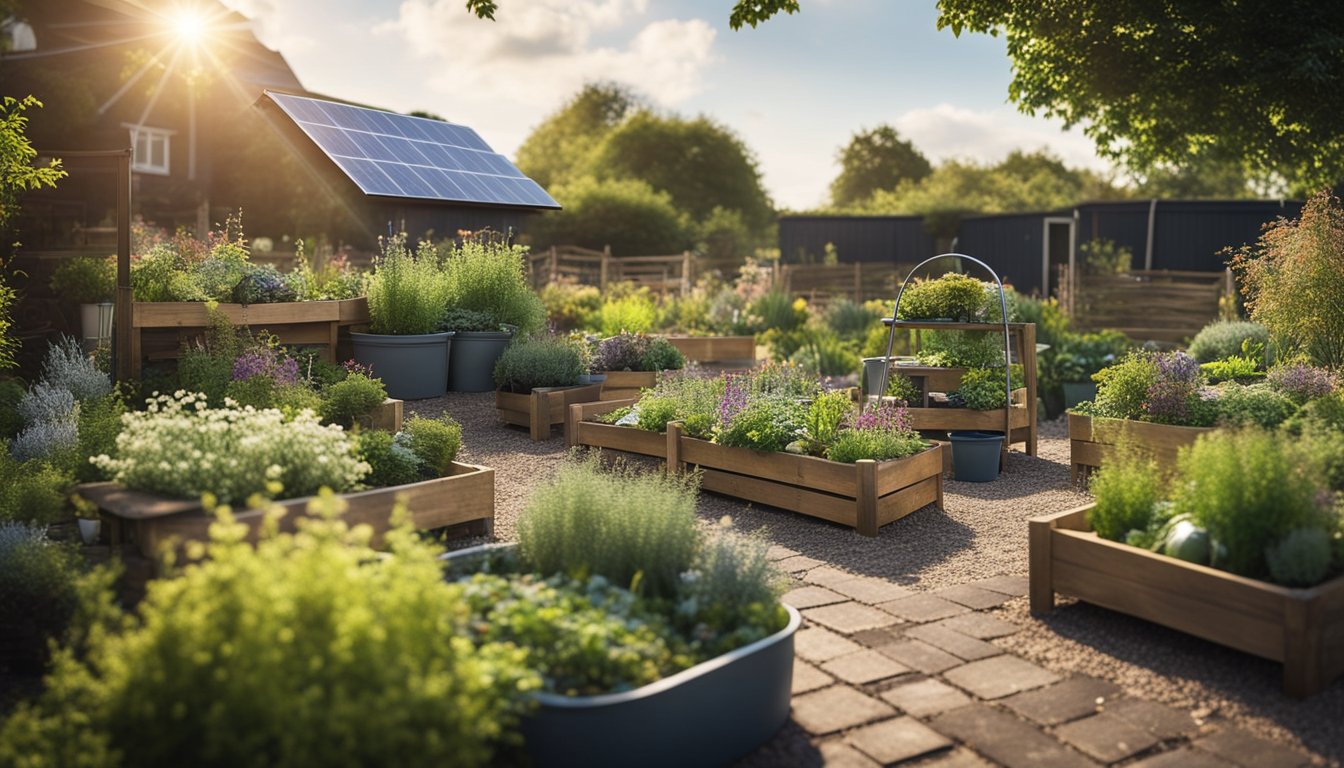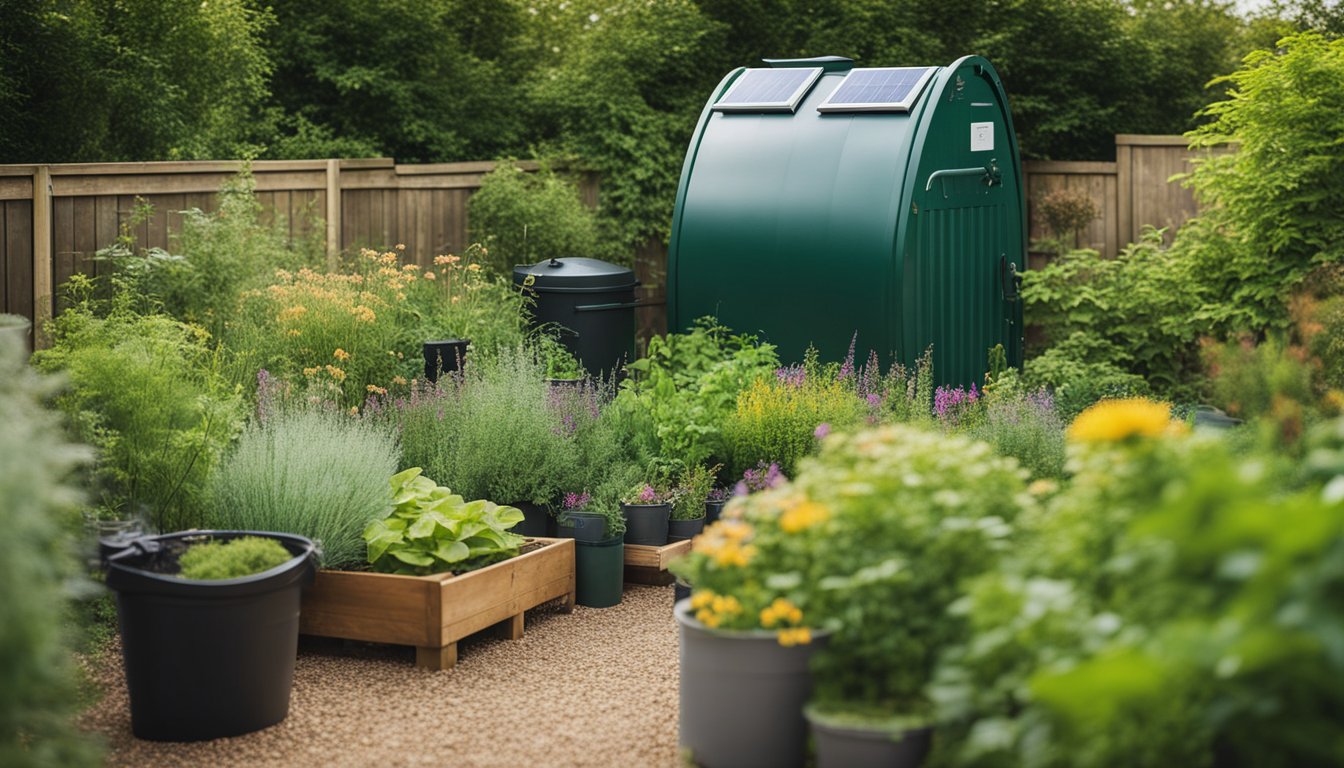Late updated: 19 Aug 2024 09:08
Written by: Emily Thornton
Planning A UK Garden With Climate Change In Mind: Adaptation Strategies for Success
As we face the increasing effects of climate change, it's essential to rethink how we plan and maintain our gardens in the UK. By choosing the right plants and sustainable practices, we can create gardens that thrive amidst shifting weather patterns. From dealing with hotter summers to managing erratic rainfall, climate-resilient gardening offers a way forward.

Gardening in this changing climate requires us to focus on native and hardy plants. Varieties like foxglove, primrose, and hawthorn are typically more resilient to these changes. Not only will these plants adapt well, but they also support local wildlife, making our gardens eco-friendly.
Water conservation becomes crucial as droughts alternate with heavy rain. Solutions like water butts help manage water sustainably, benefiting both our gardens and the environment. By integrating these practices, we ensure our gardens remain vibrant and sustainable for years to come.
Key Takeaways
- Focus on climate-resilient and native plants.
- Employ sustainable water management techniques.
- Adapt garden practices to changing weather patterns.
Designing Climate-Resilient Gardens
Creating a climate-resilient garden involves understanding local climate challenges, optimising garden layout for weather extremes, and selecting the right plants. Each of these steps is essential for building a sustainable and adaptable garden.
Assessing Climate Challenges and Opportunities
Climate change presents multiple challenges, from increased temperatures to more frequent extreme weather events. We must assess these changes to understand their impact on our gardens.
In the UK, we might experience hotter summers and wetter winters. It's crucial to consider both the risks and opportunities this brings. For example, warmer temperatures may allow for a wider variety of plants but also increase drought risk.
Garden Layout for Weather Extremes
Planning the layout to withstand weather extremes is vital. Designing proper drainage systems can prevent waterlogging and flooding. Raised beds are excellent for areas prone to flooding as they improve water run-off.
We should also consider natural windbreaks to protect plants from strong winds. Planting hedges or using pergolas and fences can serve this purpose effectively. Composting areas can be strategically placed to enhance soil health and moisture retention.
Plant Selection for a Changing Climate
Choosing the right plants is key. Emphasising native plants ensures better resilience as these species are adapted to local conditions. We should also incorporate drought-tolerant plants like lavender and sedum, which can thrive with less water.
Trees like hornbeam and shrubs like photinia are suitable for tackling a variety of climate stresses. Plants that can tolerate both heavy rainfall and dry spells, such as firethorn, are ideal choices for a balanced garden.
By carefully assessing climate impacts, strategically planning our garden layout, and selecting resilient plants, we can ensure that our gardens thrive even as the climate shifts. This approach will help us create sustainable, beautiful spaces that can withstand the uncertainties of future weather patterns.
Sustainable Gardening Practices

Creating a garden that is both beautiful and environmentally responsible requires thoughtful practices that focus on soil health, water conservation, biodiversity, and eco-friendly maintenance.
Improving Soil Health and Water Conservation
Healthy soil is the foundation of a thriving garden. We can enhance soil health by using peat-free compost, mulching, and practising crop rotation. Composting kitchen scraps and garden waste returns nutrients to the soil and reduces landfill waste.
Water conservation is equally essential. Installing a water butt to collect rainwater provides a sustainable water source for plants. Mulching also helps to retain soil moisture, reducing the need for frequent watering. Drip irrigation systems deliver water directly to the root zone, cutting down on waste.
Protecting Biodiversity and Encouraging Wildlife
By fostering biodiversity, we contribute to a resilient garden ecosystem. Planting native trees and shrubs supports a variety of wildlife, including birds and insects. Growing a mixed hedge instead of traditional fences creates habitats for numerous species.
Pollinators such as bees and butterflies are crucial for plant health. We should plant nectar-rich flowers and avoid pesticides. Incorporating green spaces like wildflower meadows or green roofs can significantly enhance local biodiversity. This not only supports wildlife but also mitigates climate breakdown by promoting carbon sequestration.
Eco-friendly Garden Maintenance
Maintaining our garden sustainably involves using eco-friendly tools and practices. Switching to manual or electric garden tools reduces emissions. Practising the four Rs (Reduce, Reuse, Recycle, Repair) helps minimise waste.
Regular maintenance of compost heaps, checking their moisture and turning them to speed up decomposition, is vital. Avoiding synthetic fertilisers and opting for organic alternatives supports soil health.
Energy efficiency in the garden can be achieved by using solar-powered lights and pumps, which save energy and reduce costs. By adopting these sustainable practices, we help combat climate change and create an eco-friendly haven in our gardens.
Frequently Asked Questions

When planning a garden in the UK with climate change in mind, it’s essential to focus on wildlife-friendly designs, resilient plants, and water management strategies. Here are some of the most common queries we receive on the topic.
What considerations should be taken into account when designing a wildlife-friendly garden in the UK?
We need to balance aesthetics with providing habitats for native species. This means incorporating features such as ponds, hedgehog highways, and nesting sites for birds. Diverse plant species that offer shelter and food throughout the year are crucial.
Which plant species are best suited for a UK garden to ensure resilience to climate change?
Selecting plants like lavender, rosemary, and sedums, which are both drought-tolerant and able to withstand deluges, is vital. It's also wise to choose native species that are already adapted to the local climate. These plants will be more resilient in the face of changing weather patterns.
How can you attract and support native wildlife in a small urban garden amidst changing climate conditions?
Even in small spaces, we can create wildlife havens by using vertical gardens, planting native flowers, and installing bird feeders. Water sources like small ponds or birdbaths can also attract various species, providing essential hydration and habitats.
In what ways can a gardener in the UK contribute to mitigating the effects of climate change through their garden design?
Incorporating carbon-absorbing elements such as trees and dense shrubs can help in sequestering carbon dioxide. Green walls and roofs can provide insulation, reducing energy consumption for heating and cooling homes. Using recycled materials for landscaping can also reduce our carbon footprint.
What are effective strategies for managing water resources in a UK garden to adapt to climate change?
Rainwater harvesting systems like water butts can collect and store rainwater for dry spells, while permeable paving can reduce surface run-off, helping to prevent flooding. Additionally, using mulch can retain soil moisture and reduce the need for frequent watering.
How can one integrate sustainable practices into a UK garden to promote biodiversity and ecosystem health?
We should focus on organic gardening practices by avoiding chemical pesticides and fertilisers. Composing garden waste, encouraging pollinators through diverse planting, and creating habitats such as log piles and insect hotels promote a healthy ecosystem. Sustainable practices ensure long-term biodiversity and ecosystem stability.
